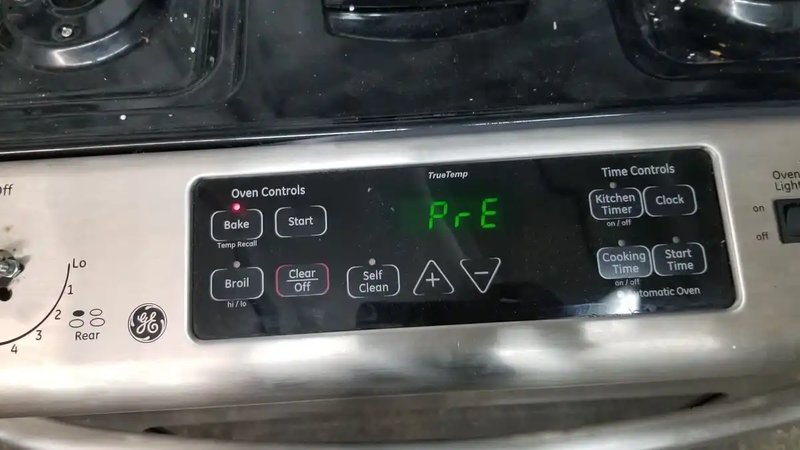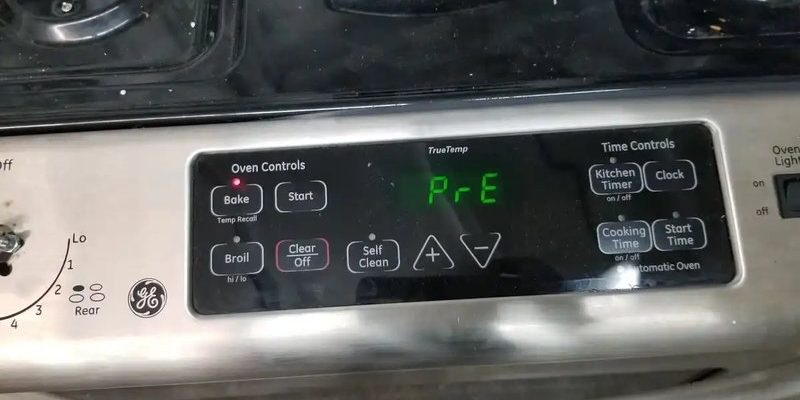
The F2 error code can feel like your oven’s cryptic way of telling you that something isn’t quite right. It often indicates a problem with the temperature sensor or a potential overheating issue. While that might sound technical, don’t worry—you’re not alone in deciphering this. Think of it like your oven’s equivalent of a car’s “check engine” light; it’s not necessarily catastrophic but definitely deserves attention. In the following sections, we’ll demystify what could be causing this error, how it impacts your cooking plans, and more importantly, how you can potentially resolve it.
Understanding Error Code F2 in Simple Terms
At first glance, an error code like F2 might seem as mysterious as a secret code in a spy movie. In reality, it’s simply a signal from your oven’s computer system. This particular code is often linked to issues with the temperature sensor in your GE oven or range. Think of this sensor as the oven’s internal thermometer. It’s tasked with the crucial job of keeping things at just the right heat, ensuring your lasagna bakes evenly or your pie crust turns out perfectly golden.
Over time, just like an old thermometer might give you a faulty reading, the temperature sensor can wear out or malfunction. This can lead to the oven incorrectly thinking it’s much hotter or cooler than it actually is. It’s like trying to bake cookies with a faulty oven dial—you might end up with burnt edges and a raw center. By understanding this, you can start to see how such an issue might affect your cooking.
Another underlying cause might be related to overheating. Perhaps a malfunctioning fan isn’t circulating air properly, or the oven door seal isn’t as tight as it used to be, letting heat escape. Like trying to keep a room warm with a window open, this imbalance can cause overheating, prompting the oven to flash the F2 code as a protective measure.
Common Causes of the F2 Error Code
The F2 error code is often associated with a few key issues, starting with the temperature sensor itself. Over time, this little component can wear out, much like how a well-used pencil sharpener starts to dull. It may start giving inaccurate readings, causing the oven to overheat or underheat unknowingly, leading to the error code you see.
Another common culprit could be a malfunctioning control board. Imagine it as the brain of your oven, processing all the signals and commands. If something’s amiss there, it might misinterpret the signals being sent from the sensor, much like when you have a bad phone connection and mishear a conversation. The result could be the same flashing F2 error code on your display.
Additionally, there might be problems with the oven’s more mechanical parts, like the fan or the heating elements. If these aren’t functioning properly, your oven might struggle to maintain the correct temperature, leading to overheating. It’s akin to driving a car with a faulty radiator; without proper cooling, things can heat up pretty rapidly.
Steps to Troubleshoot and Resolve the F2 Error
So, what should you do when faced with this seemingly daunting error? First, it’s important to stay calm. Remember, this isn’t the end of your beloved appliance’s life. Start by checking the simplest things: ensure the oven door is fully closed and the seal intact. Sometimes, the simplest solutions are the most effective.
Next, consider inspecting the temperature sensor. This might sound like a daunting task, but think of it as changing a light bulb; with the right guidance, it’s entirely manageable. If you’re comfortable, you might try disconnecting the power, removing the sensor, and checking for any visible damage or disconnections.
If these steps don’t resolve the F2 error, it might be time to consider professional help. Sometimes the issue is more complex, involving the control board or internal wiring. A qualified technician can provide a thorough diagnosis and repair, ensuring your oven returns to perfect working order.
Preventative Tips to Avoid Future F2 Errors
Now that you understand the causes and solutions, let’s talk about prevention. Regular maintenance can help keep your oven in good health, much like how routine oil changes keep your car running smoothly. Make it a habit to check and clean your oven regularly, ensuring all components are in good working order.
Additionally, using your oven properly can prevent undue stress on its components. Avoid slamming the oven door or overloading the racks, as this can put unnecessary pressure on the internal systems. Much like how respecting the weight limits on a bridge keeps it intact, gentle use can help extend your oven’s life.
Finally, consider scheduling an annual professional check-up. Think of it as a health check for your appliance: a technician can spot potential issues before they turn into full-blown problems, saving you time and stress in the long run.
By understanding the common causes of the F2 error code and taking steps to address and prevent it, you can keep your GE oven or range running smoothly. With a bit of attention and care, you’ll be back to enjoying your culinary creations in no time.
